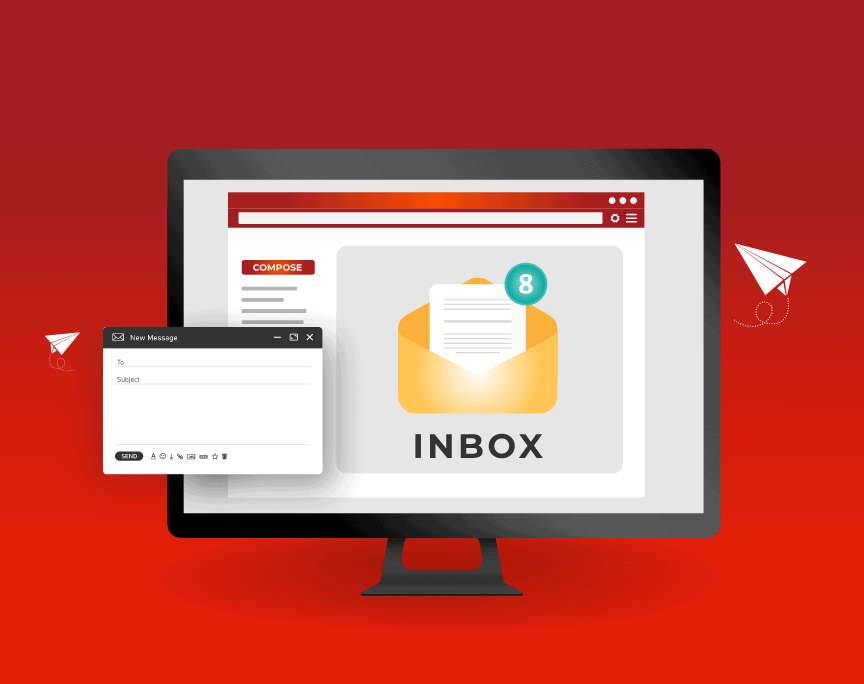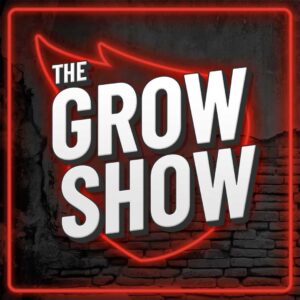In today’s fast-moving digital landscape, cold emailing continues to be a powerful tool for B2B outreach—whether you’re focused on business development, networking, or driving sales. When done correctly, cold emails can open doors to meaningful conversations and new revenue opportunities. When done poorly, they’re ignored—or worse, marked as spam.
The challenge most professionals face is crafting the right message: one that gets opened, read, and acted on. With the right cold email templates and proven strategies, you can significantly improve your outreach success.
This guide covers everything you need to create cold emails that connect: foundational best practices, personalization tips, ready-to-use templates, and strategies to measure and optimize performance.
Contents
Understanding the Basics of Cold Emailing
Before you dive into templates, it’s important to understand what makes cold emailing different from other outreach channels.
A cold email is sent to someone you don’t have an existing relationship with, with the goal of introducing yourself, your services, or your products in a compelling way. Unlike warm outreach, you’re starting with zero familiarity, so every word matters.
The Anatomy of a Successful Cold Email
Concise and clear: Short, direct messages are easier to read and respect the recipient’s time.
Personalized: Messages that feel tailored to the recipient perform far better than generic blasts.
Value-focused: Position your outreach around solving the recipient’s problems, not just selling.
Curiosity-driven: Give them a reason to respond—create intrigue without overwhelming detail.
It’s important to follow the 90, 4, 3, 2, 1 formula to keep email copy concise.
Here’s the breakdown:

Understanding the recipient’s pain points, goals, and challenges is key. When your message is relevant and helpful, you’re far more likely to earn a response and start a meaningful conversation.
The Importance of Personalization
Personalization is no longer optional—it’s the foundation of successful cold emailing. Generic messages are deleted within seconds, while personalized messages demonstrate genuine effort and relevance.
Ways to personalize your cold email:
Use the recipient’s name and company in both the email and subject line.
Reference recent company news, a campaign, or a project they’re involved with.
Tie your offering to their specific industry or role challenges.
Example: If you’re reaching out to a marketing manager, reference a recent campaign they launched or an article they published. This immediately establishes a connection and shows you’ve done your homework.
Even deeper personalization comes from understanding industry trends affecting their business. By showing both specific knowledge about their company and broader industry insights, you position yourself as a valuable resource—not just another salesperson. This approach fosters trust and opens the door to collaboration.
Cold Email Templates for Different Scenarios
Different goals require different messaging approaches. Below are three proven cold email templates designed to maximize engagement and boost response rates.
1. The Introductory Email
This template is ideal for introducing yourself and your company to a potential client or partner.
Subject: Quick Introduction – [Your Name] from [Your Company]
Body:
Hi [Recipient’s Name],
I hope this message finds you well! My name is [Your Name], and I’m with [Your Company]. We specialize in [briefly explain your service or product].
I recently came across your work on [mention any specific detail about their work or company], and I believe there’s a great opportunity for us to collaborate. I’d love to schedule a brief call to discuss how we can help [specific benefit relevant to their needs].
Looking forward to hearing from you!
Best,
[Your Name]
[Your Contact Information]
Why it works:
Personalizes the message by mentioning something specific about their work.
Positions the sender as helpful and collaborative.
Keeps the request simple: one clear CTA to schedule a call.
To increase effectiveness, you can include a brief success story or client result to demonstrate credibility and highlight potential impact.
Example:

2. The Follow-Up Email
Many cold emails go unanswered—not because the prospect isn’t interested, but because they’re busy. Following up politely is critical.
Subject: Following Up on My Previous Email
Body:
Hi [Recipient’s Name],
I hope you’re doing well! I wanted to follow up on my previous email regarding [briefly mention the topic]. I understand you’re busy, but I genuinely believe that our [service/product] could provide significant value to [Recipient’s Company].
If you’re interested, I’d love to set up a time to chat. Please let me know what works for you.
Thanks for your time!
Best,
[Your Name]
[Your Contact Information]
Why it works:
Polite and professional, without pressure.
Reinforces value without repeating the entire pitch.
Keeps the CTA straightforward: scheduling a conversation.
To strengthen this follow-up, add a new piece of information or insight, like a relevant industry article or trend. This shows ongoing interest and positions you as a resource.
3. The Value Proposition Email
This template delivers value upfront, helping you grab attention and demonstrate relevance.
Subject: [Recipient’s Company] Can Benefit from [Your Service/Product]
Body:
Hi [Recipient’s Name],
I hope you’re having a great day! I’ve been following [Recipient’s Company] and noticed [specific observation about their business].
At [Your Company], we help businesses like yours [explain how your service/product solves a specific problem]. For example, we recently worked with [Client Name] and helped them achieve [specific result].
I’d love to discuss how we can help [Recipient’s Company] achieve similar results. Are you available for a quick chat this week?
Best regards,
[Your Name]
[Your Contact Information]
Why it works:
Ties your value directly to the recipient’s needs.
Provides proof through a specific client example or result.
Encourages a low-commitment next step.
Adding a data point or statistic can make this even more compelling. Consider including a free resource, like a downloadable guide, to give immediate value.
Example:

Crafting Engaging Subject Lines
Your subject line is the first barrier to engagement. A strong subject line increases open rates and sets the tone for the message.
Tips for writing cold email subject lines:
Keep it short: 6–10 words, visible on mobile.
Use action-oriented or benefit-driven language.
Personalize by including the recipient’s name or company.
Examples:
“Ideas to boost [Company Name]’s lead flow”
“[First Name], quick question about [specific problem]”
“Let’s talk [goal/outcome] at [Company Name]”
Best Practices for Cold Emailing
Beyond templates, following these best practices will increase your chances of success:
Keep It Concise
Respect their time. Aim for 100–200 words and focus only on essential points.Include a Clear Call to Action (CTA)
Whether it’s scheduling a call or replying with availability, make the next step crystal clear.Test and Optimize
A/B test subject lines, body copy, and send times. Use analytics to refine your approach over time.
Overcoming Common Cold Email Challenges
Cold emailing comes with hurdles. Understanding and addressing them can improve performance.
1. Low Response Rates
If responses are low, reassess your email’s relevance and value.
Are you personalizing each message?
Is your CTA specific and compelling?
Could you add social proof, like a case study or testimonial?
2. Being Marked as Spam
Avoid spam filters by:
Providing genuine, valuable content.
Avoiding excessive sales language and all caps.
Always include an unsubscribe option.
3. Time Constraints
Prospects are busy. If you don’t hear back, don’t give up too soon.
Polite, consistent follow-ups often rekindle interest and increase reply rates.
Measuring Your Cold Email Success
Tracking performance is essential for optimizing your campaigns.
Key Metrics to Monitor:
Open Rate: Indicates subject line performance and deliverability.
Response Rate: Measures engagement with your content.
Conversion Rate: Tracks how many responses lead to booked calls or sales.
Using Analytics Tools
Leverage email tracking and CRM tools to:
Identify which templates and campaigns perform best.
Track trends over time.
Make data-driven decisions for future outreach.
Conclusion
Cold emailing remains one of the most cost-effective and powerful outreach strategies when done right. By using personalized cold email templates, following best practices, and continually optimizing your approach, you can significantly increase response rates and drive real business results.
The key to success lies in combining strategy, relevance, and persistence. Cold emails aren’t just about sending messages—they’re about starting meaningful conversations that lead to long-term relationships and revenue growth.
Take Your Outreach to the Next Level with Abstrakt
Ready to transform your cold email strategy into a pipeline-building powerhouse?
Abstrakt partners with businesses across the U.S. and Canada to deliver high-quality B2B leads through expert outreach strategies. From crafting personalized messaging to executing multi-channel campaigns, our team is dedicated to helping you achieve sustainable growth.
Don’t settle for low response rates.
Learn how Abstrakt can supercharge your cold email outreach today.

Madison Hendrix
Madison has worked in SEO and content writing at Abstrakt for over 5 years and has become a certified lead generation expert through her hours upon hours of research to identify the best possible strategies for companies to grow within our niche industry target audiences. An early adopter of AIO (A.I. Optimization) with many organic search accolades - she brings a unique level of expertise to Abstrakt providing helpful info to all of our core audiences.
- Madison Hendrix
- Madison Hendrix
- Madison Hendrix
- Madison Hendrix





